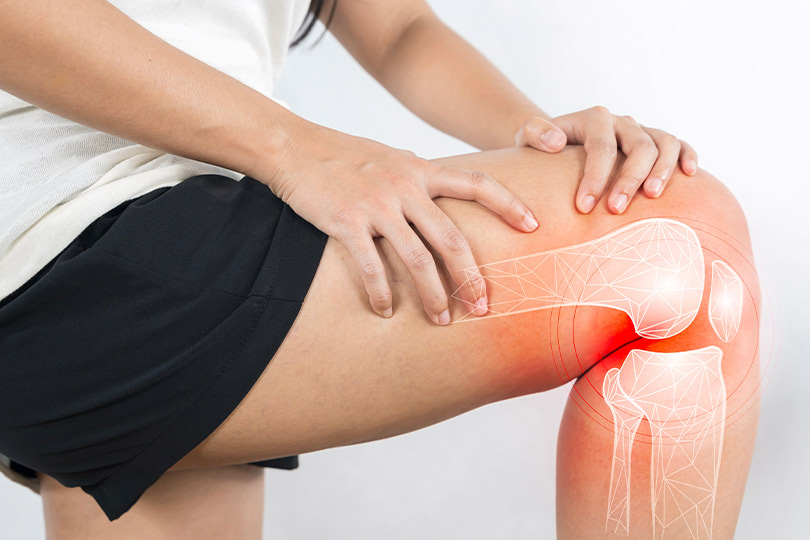What Is Pain Dependency, and How Can You Break Free from It?
Pain relief dependency occurs when patients develop an overreliance on medical interventions, such as medications, injections, or procedures, to manage their chronic pain, rather than addressing underlying causes. This phenomenon, sometimes called “medical co-dependency pain,” creates a cycle where temporary relief becomes the goal rather than long-term healing. Like other dependencies, it often begins innocently as patients seek immediate comfort from debilitating symptoms.
How the Dependency Cycle Develops

Chronic pain patients can easily fall into this pattern. When pain persists for months or years, the natural inclination is to seek quick fixes that provide immediate relief. Over time, patients may begin requesting increasingly frequent interventions, higher medication doses, or multiple treatment types simultaneously. This pattern isn’t just about finding relief. It often comes from the fear that the pain will return and the mental strain of living with it.
This cycle can have far-reaching consequences that affect both physical and emotional well-being. Common outcomes of pain relief dependency include:
- Diminished effectiveness over time as the body develops tolerance to medications or treatments
- Potential side effects from repeated steroid injections include tissue damage and hormonal imbalances
- Risk of developing secondary conditions from overused interventions
- Psychological dependency where pain becomes tied to seeking medical treatment
- Financial burden from recurring treatments that provide only temporary relief
Breaking free from pain relief dependency requires a fundamental shift in approach, moving from symptom management to addressing root causes. While medications and injections serve important roles in comprehensive pain management, sustainable relief comes from identifying and treating underlying conditions, strengthening supporting structures, and adopting lifestyle modifications that support long-term healing.
The Dangers of Overusing Pain Medications and Injections
Many chronic pain patients find themselves caught in a troubling cycle that begins innocently enough. After experiencing relief from their first pain injection or medication, they naturally seek the same intervention when discomfort returns. Over time, this can evolve into a pattern of dependency where patients require increasingly frequent treatments just to maintain their quality of life.
In the Rio Grande Valley, healthcare providers often observe patients who started with occasional interventions but gradually increased to monthly or even weekly treatments. What begins as legitimate pain management can transform into a concerning cycle where each intervention provides diminishing returns. This pattern is especially prevalent among patients with chronic back pain, where the temporary nature of relief leads to repeated treatments without addressing underlying causes.
The consequences of this cycle extend beyond dependency. Frequent steroid injections can lead to tissue weakening, increased infection risk, and potential hormonal imbalances. With pain medications, patients often develop tolerance, requiring higher doses to achieve the same relief, while risking side effects ranging from constipation to respiratory depression.
The Physical and Emotional Toll

Pain relief dependency affects more than just the body. It can impact every aspect of life. Over time, repeated interventions and reliance on temporary relief can take both a physical and emotional toll:
- Repeated steroid injections can lead to cartilage degradation and accelerated joint deterioration
- Over-reliance on pain medications may mask symptoms while underlying conditions worsen
- The emotional cycle of relief and return of pain can lead to anxiety and depression
- Financial strain from ongoing treatments creates additional stress that can amplify pain perception
Breaking the Dependency Cycle
Breaking this dependency cycle is essential for true healing. Many McAllen patients have discovered that addressing the root causes of pain through comprehensive treatment plans leads to more sustainable outcomes than simply chasing temporary relief. This shift from symptom management to holistic healing not only improves physical health but also restores the emotional well-being and independence that chronic pain often diminishes. At Altus Spine & Joint Pain Care patients are empowered through:
- Condition awareness: Education on specific pain triggers and management strategies
- Collaborative care: Active involvement in choosing treatment approaches that fit personal goals
- Smart movement: Balancing activity and rest through proper ergonomics and posture
- Whole-body wellness: Supporting recovery with nutrition, sleep, and stress management
Local pain specialists have noted that patients who successfully transition from dependency to sustainable pain management report improved sleep, enhanced mobility, and a renewed sense of control over their lives. For residents of the Rio Grande Valley, recognizing the early signs of pain management dependency is the first step toward reclaiming a life not defined by the next injection or prescription.
Integrative Approach to Sustainable Pain Relief

At Altus Spine & Joint Pain Care, the philosophy centers on treating the root causes of pain rather than simply masking symptoms. This fundamental principle drives their approach to providing lasting relief without fostering dependency. Unlike traditional pain management that may rely heavily on medications, Altus Spine & Joint Pain Care focuses on healing of the actual disease process, instead of masking the symptoms. As the only comprehensive pain management center in the Rio Grande Valley it offers cutting-edge treatments and personalized care plans to address the root causes of the pain.
The center’s comprehensive approach combines several evidence-based modalities to address pain from multiple angles. Their arsenal includes advanced interventional procedures like precision-guided nerve blocks and epidural injections, regenerative medicine treatments such as platelet-rich plasma and orthobiologics, and cutting-edge technologies like radiofrequency ablation and spinal cord stimulation.
What sets Altus apart is its integration of these treatments with extensive patient education, ensuring individuals understand both their condition and their treatment options.
These methods provide safer alternatives to medication dependency by addressing underlying issues rather than temporarily numbing pain. By directly targeting pain sources through interventional techniques, patients often experience longer-lasting relief with fewer treatments. Regenerative approaches stimulate the body’s natural healing mechanisms, potentially reducing the need for repeated interventions.
Empowering McAllen, TX Patients: Steps to Break Free from Pain Dependency
Breaking free from pain relief dependency requires both awareness and action. The journey begins with recognizing the cycle and taking proactive steps toward sustainable pain management. Patients who successfully overcome dependency typically work with specialists who address root causes rather than merely treating symptoms. To start breaking the cycle and support long-term recovery, consider the following strategies:
- Track your treatments and their effectiveness, noting diminishing returns or increasing frequency needs
- Explore complementary approaches like physical therapy, acupuncture, and massage that strengthen your body’s natural healing abilities
- Set realistic recovery goals with measurable milestones beyond just pain reduction
- Incorporate appropriate exercise to strengthen supporting muscles and improve joint stability
- Consider anti-inflammatory nutrition and stress management techniques to reduce systemic inflammation
McAllen residents have access to advanced, evidence-based pain management through Altus Spine & Joint Pain Care. The team provides comprehensive evaluations, combining precise diagnostics with personalized treatment plans that target the root cause of pain. Using minimally invasive procedures such as nerve blocks, regenerative medicine, and targeted injections, patients receive lasting relief while reducing reliance on medications.
Don’t let chronic pain dictate your life. Take the first step toward lasting relief with a personalized care plan designed to restore your strength, independence, and peace of mind. Schedule your consultation at Altus Spine & Joint Pain Care today and start your journey toward freedom from pain dependency.





